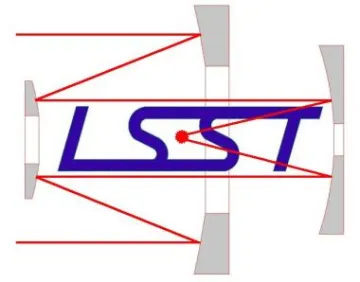
The LSST is a new kind of telescope. With a light-gathering power among the largest in the world, it can detect faint objects with short exposures. Its uniquely wide field of view allows it to observe large areas of the sky at once; compact and nimble, it can move quickly between images. Taking more than 800 panoramic images each night, it can cover the sky twice each week.
A powerful data system will compare new with previous images to detect changes in brightness and position. Hundreds of images of each part of the sky will be used to construct a movie of the sky. As just one example, this movie can be used to detect and track potentially hazardous asteroids - asteroids that might impact the Earth and cause significant damage.
Data from LSST will be used to create a 3D map of the Universe with unprecedented depth and detail. This map can be used to locate the mysterious dark matter and to characterize the properties of the even more mysterious dark energy. As with past technological advances that opened new windows of discovery, such a powerful system for exploring the faint and transient universe will undoubtedly serve up surprises.
Plans for sharing the data from LSST with the public are as ambitious as the telescope itself. Anyone with a computer will be able to fly through the Universe, zooming past objects a hundred million times fainter than can be observed with the unaided eye. The LSST project will provide analysis tools to enable both students and the public to participate in the process of scientific discovery. The work on the project is broken down into three main areas: The Camera, Telescope and Site and Data Management. We invite you to learn more about the science of LSST at www.lsst.org/lsst
LSST will be unique: no existing telescope or proposed camera could be re-designed to cover ten square degrees of sky with a collecting area of forty square meters. The science that it will pursue had to wait for this new capability—the ability to reach faint objects twenty times faster than currently possible over the entire visible sky. Several National Academy of Sciences and federal agency advisory committee reports have recommended the construction of LSST.

